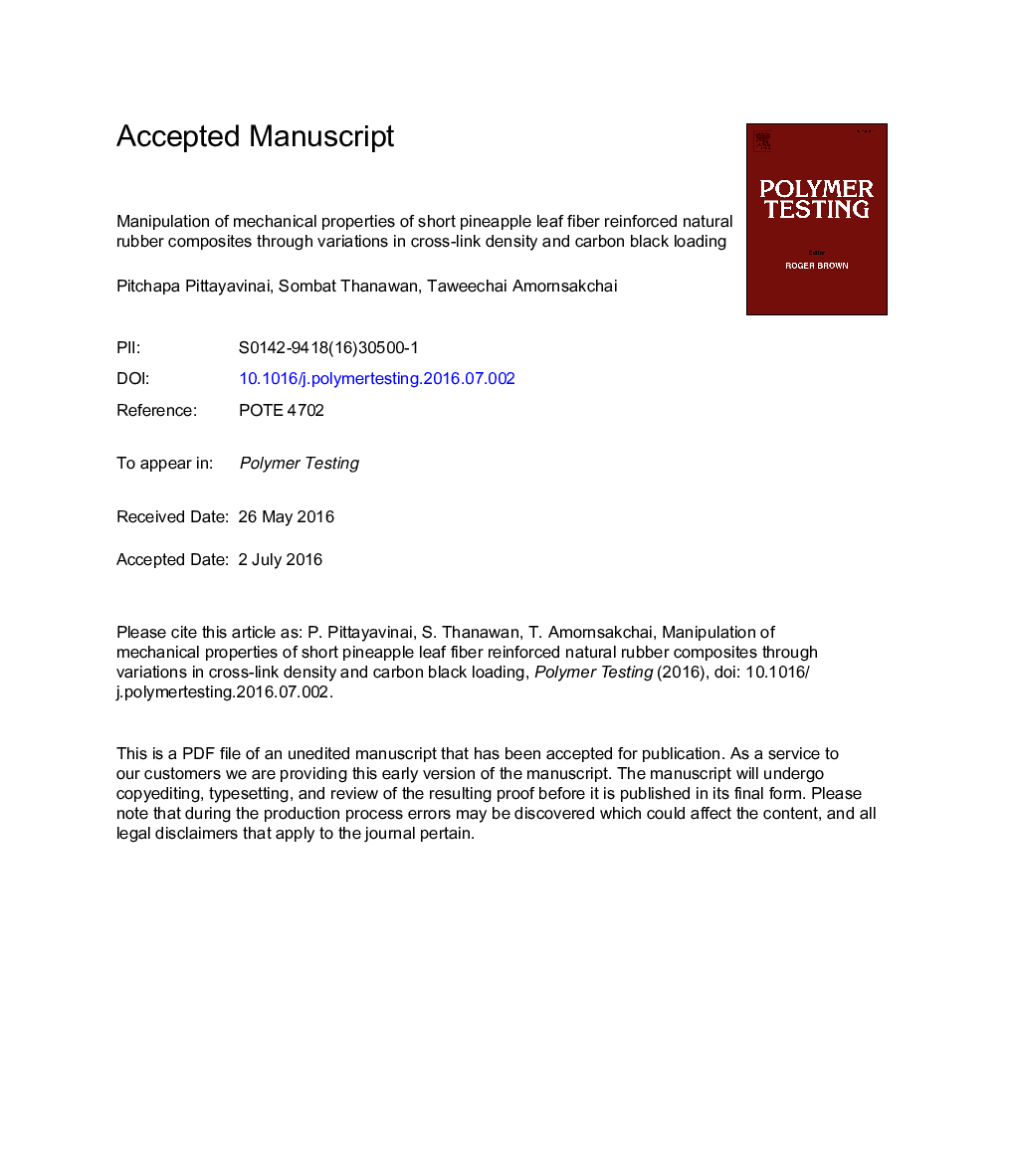| کد مقاله | کد نشریه | سال انتشار | مقاله انگلیسی | نسخه تمام متن |
|---|---|---|---|---|
| 5205880 | 1502936 | 2016 | 27 صفحه PDF | دانلود رایگان |
عنوان انگلیسی مقاله ISI
Manipulation of mechanical properties of short pineapple leaf fiber reinforced natural rubber composites through variations in cross-link density and carbon black loading
ترجمه فارسی عنوان
دستکاری خواص مکانیکی کامپوزیت های لاستیکی طبیعی تقویت شده با فیبر قارچ کوتاه از طریق تغییرات چگالی متقابل و بارگذاری کربن سیاه
دانلود مقاله + سفارش ترجمه
دانلود مقاله ISI انگلیسی
رایگان برای ایرانیان
کلمات کلیدی
لاستیک طبیعی، فیبر برگ پنیری، فیبر طبیعی، ترکیبی ترکیبی، تراکم متقابل،
موضوعات مرتبط
مهندسی و علوم پایه
شیمی
شیمی آلی
چکیده انگلیسی
The aim of this paper is to demonstrate that the stress-strain behavior of natural rubber reinforced with short pineapple leaf fiber (PALF) can easily be manipulated by changing the cross-link density and the amount of carbon black (CB) primary filler. This gives more manageable control of mechanical properties than is possible with conventional particulate fillers alone. This type of hybrid rubber composite displays a very sharp rise in stress at very low strains, and then the stress levels off at medium strains before turning up again at the highest strains. The composites studied here contain a fixed amount of PALF at 10 part (by weight) per hundred rubber (phr) and varying carbon black contents from 0 to 30Â phr. To change the cross-link density, the amount of sulfur was varied from 2 to 4Â phr. Swelling ratio results indicate that composites prepared with greater amounts of sulfur and carbon black have greater cross-link densities. Consequently, this affects the stress-strain behavior of the composites. The greater the cross-link density, the less is the strain at which the stress upturn occurs. Variations in the rate of stress increase (although not the stress itself) in the very low strain region, while dependent on fillers, are not dependent on the crosslink density. The effect of changes in crosslinking is most obvious in the high strain region. Here, the rate of stress increase becomes larger with increasing cross-link density. Hence, we demonstrate that the use of PALF filler, along with the usual carbon primary filler, provides a convenient method for the manipulation of the stress-strain relationships of the reinforced rubber. Such composites can be prepared with a controllable, wide range of mechanical behavior for specific high performance engineering applications.
ناشر
Database: Elsevier - ScienceDirect (ساینس دایرکت)
Journal: Polymer Testing - Volume 54, September 2016, Pages 84-89
Journal: Polymer Testing - Volume 54, September 2016, Pages 84-89
نویسندگان
Pitchapa Pittayavinai, Sombat Thanawan, Taweechai Amornsakchai,
